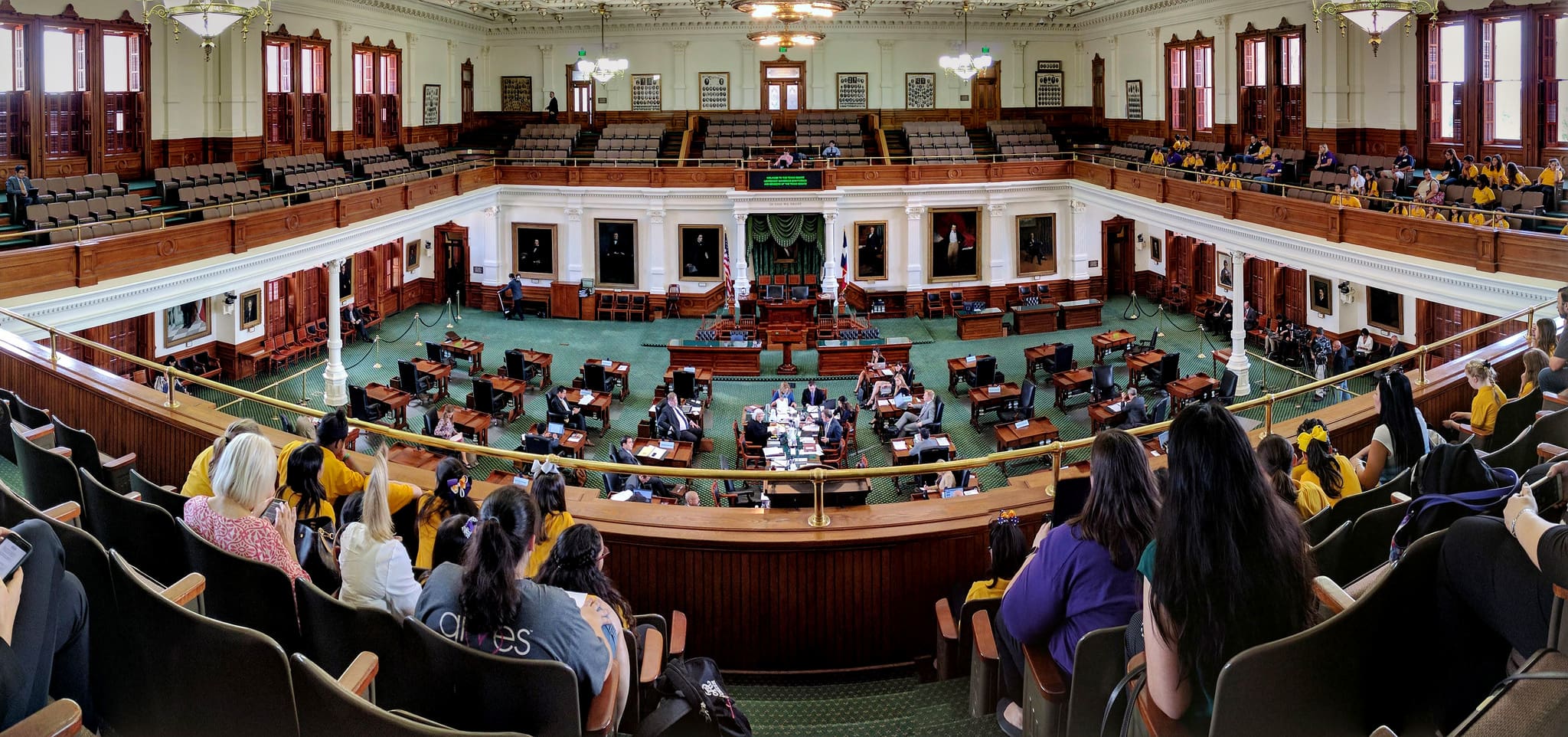Stay tuned over the next several days for more analysis and reaction to Texas Senate and House budget proposals and revisions.
Today the Senate Finance Committee approved its substitute for the Senate budget proposal (Senate Bill 1), the General Appropriations Act for 2018 and 2019. Total spending proposed for the next budget cycle in SB 1 is $217.7 billion, a 0.7 percent increase compared to the $216 billion in state and federal revenue budgeted for 2016-17. This means a real spending drop of almost eight percent, once population growth and inflation are taken into account. Total General Revenue spending would be $106.3 billion, which would be a 1.6 percent drop from 2016-17 even before any population or inflation adjustment.
Public education highlights
For the Foundation School Program (FSP), which is the single largest use of General Revenue in the budget and the mechanism through which the state funds school districts and charter schools, SB 1 still recommends $42.4 billion in total. This is the same amount as when SB 1 was originally introduced. The base level of per-student funding (“Basic Allotment”) would remain at $5,140 in 2018 and 2019, and local school property taxes are assumed to increase by 5.85 percent in tax year 2017 and 4.89 percent in 2018.
Other increases in SB 1 include:
• $25 million for E-Rate, to get Texas matching federal funds that improve high-speed broadband connectivity for all Texas public schools
• $65 million for a new public-private partnership to ensure high-quality programs for all students in pre-Kindergarten, in addition to $1.6 billion for pre-K that is provided through the FSP
• $311 million total to address the Teacher Retirement System TRS-Care shortfall, including $116 million that is contingent on SB 788 (an increase in the state contribution rate from 1.0 percent to 1.25 percent of active employee payroll)
Medicaid and other Health & Human Services
Article II of the budget gained almost $1.9 billion in the mark-up process, mostly for Medicaid and the more than 4 million low-income Texans who rely on it for health care. Funding was added to support Medicaid at 2018 caseload levels; medical cost inflation is not included.
Other highlights of the revised proposal are:
• $430 million more for Child Protective Services (CPS), to continue the $1,000/month pay raises and 828 new CPS and support staff approved in the interim. This includes $55 million for 386 new conservatorship workers to further reduce caseloads, and $116 million to strengthen foster care capacity
• $244 million more for mental health, including $63 million to eliminate waitlists for community services
• Funding for new construction and critical repairs to state hospitals
• Funding for women’s health programs to maintain the level of clients served ($31 million more than the 2016-17 level)
Sen. Nelson commented that the budget is still a work in progress; it will be approved by the full Senate as early as next week and then go to the House and through a budget conference committee process.
She also noted that SB 1 deals only with the appropriations side of the Texas budget. On the revenue side, she has been informed by the state comptroller that $2.5 billion of the Proposition 7 transfer (of general revenue sales taxes to the State Highway Fund) can occur in September 2019, instead of August 2019. That means it can be counted as General Revenue available for this coming biennium. The money will still go to the Department of Transportation to pay for non-tolled highway projects.
SB 1 as marked up by the committee leaves the Economic Stabilization Fund untapped. No mention was made of the Senate’s potential changes to a 2017 supplemental budget bill. The current version, SB 1266 as filed, uses none of the ESF and does not address the $2.6 billion Medicaid shortfall for 2017.
